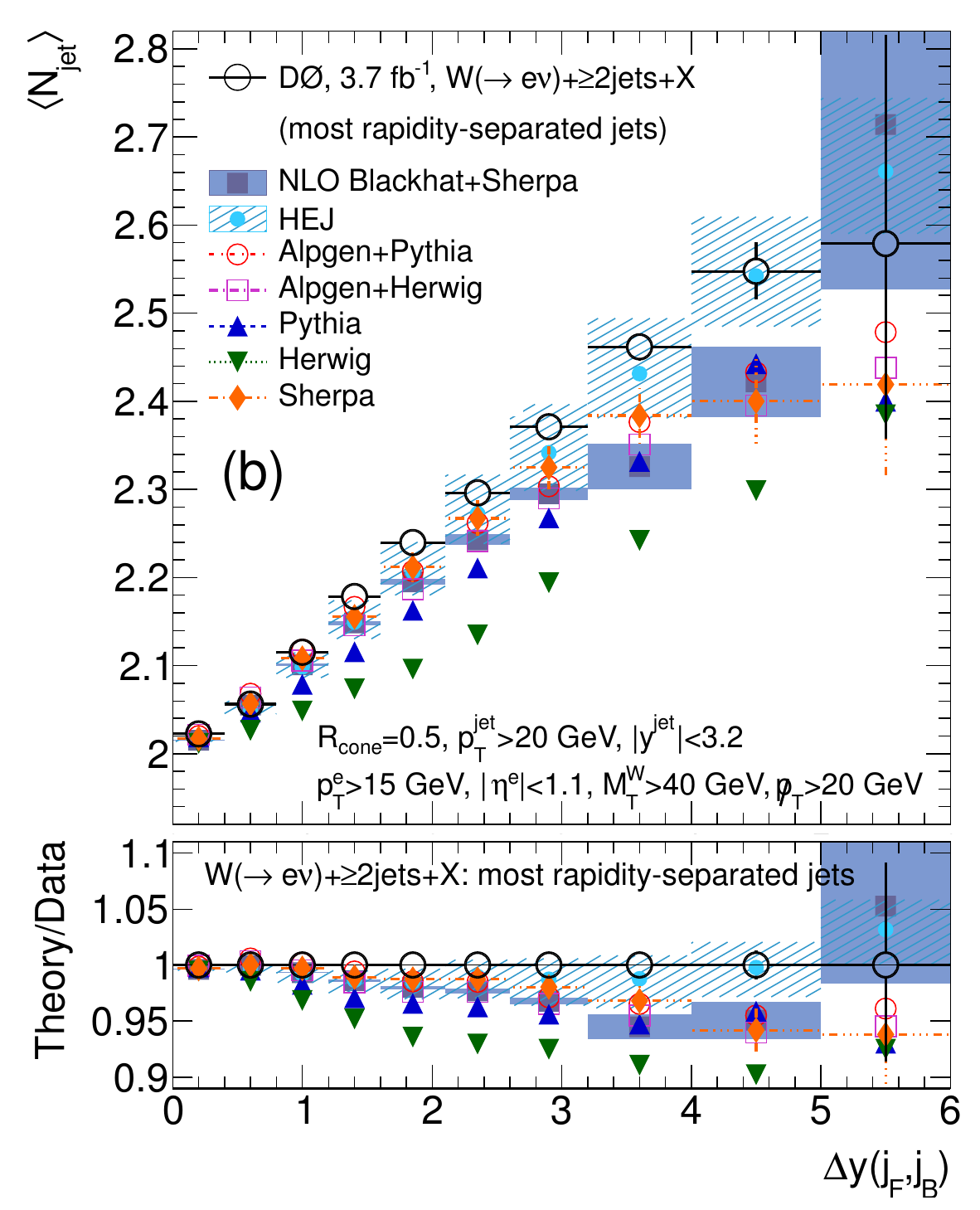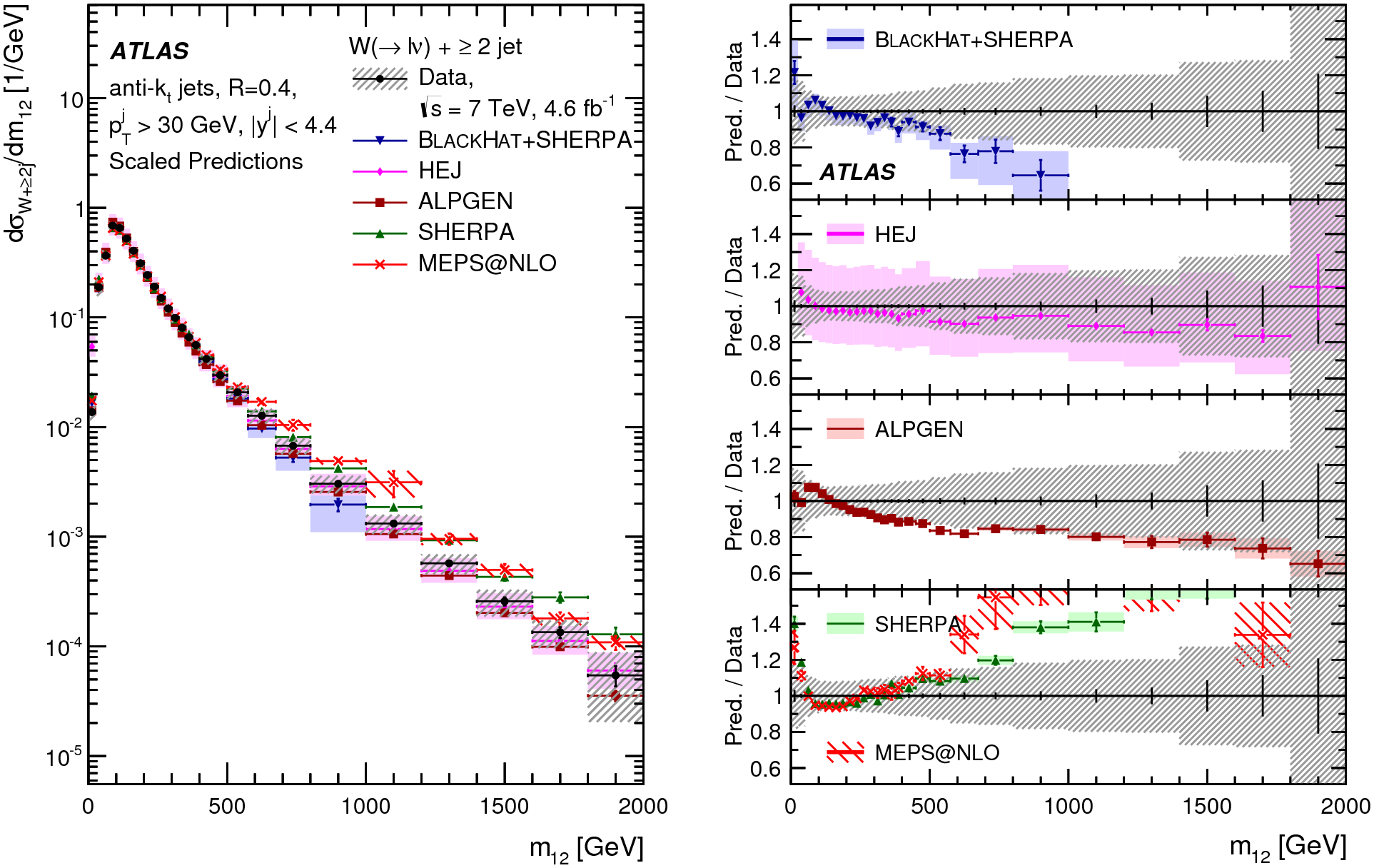
a High Energy Physics Monte Carlo
generator for multi-jet processes.
Authors: Jeppe R. Andersen and Jennifer M. Smillie
The implementation of the HEJ resummation scheme and matching allows for concise predictions for multijet processes at hadron colliders.
The program for the generation (according to the HEJ framework) and analysis of W production in association with at least two jets can be downloaded and installed as described in the section for Installation.
The HEJ framework is developed particularly to describe the effects of many hard, radiative corrections. Such corrections obviously become increasingly important, as the centre-of-mass energy at colliders is increased.
The impact of the radiative corrections included in High Energy Jets on several important observables used in search strategies for New Physics is discussed further in the paper by J.R. Andersen, T. Hapola, J.M. Smillie: arXiv:1206.6763.
Below is a comparison taken from the paper by D0 on "Studies of W boson plus jets production in p-pbar collisions at sqrt(s)=1.96 TeV" (arXiv:1302.6508). The plot shows the predictions from HEJ of the average number of hard jets versus the rapidity separation of the forward/backward hard jet in events with two jets and a W-boson at the Tevatron.

Below is a figure taken from the ATLAS study "Measurements of the W production cross sections in association with jets with the ATLAS detector" (arXiv:1409.8639). The figure compares the predictions of the dijet invariant mass spectrum to data. The perturbative corrections that are systematically treated to all orders in HEJ are particularly important for large invariant dijet masses. It is seen that HEJ delivers a very good description of data.
